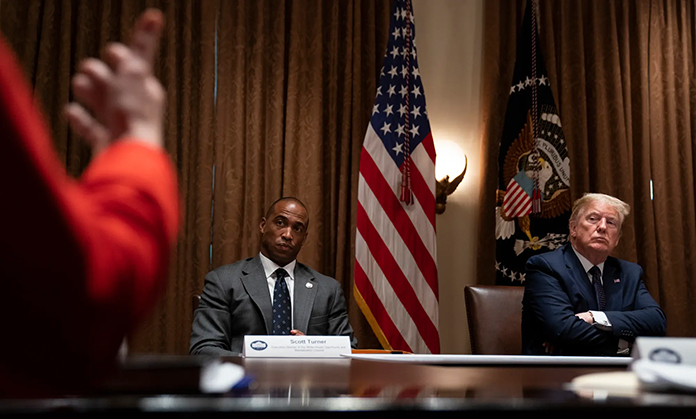First, let me explain why I was skeptical. I do sometimes feel enormous pressure, generally about our firm’s investment performance. Do I really feel calmer than my colleagues? Both my husband and my second-in-command at the office would suggest, only half-jokingly, that I am miraculously unencumbered because I am so skilled at off-loading my stress onto them.
But it’s all relative, and other researchers have also found that bosses feel less stress than their employees do. Bosses’ perceptions of stress are offset by factors such as status, autonomy, and job security, which are generally higher for managers than for their employees. While I’m not about to ask everyone in my company to participate in a daily cortisol readout, I have to operate under the assumption that even if I do feel pressure, my employees may feel more. Which is even more of a reason to understand how to reduce the tension my colleagues feel.
Steve Arneson describes the “leader’s dilemma” as the quandary of how to secure the greatest output at a company without building stress to the point of diminishing returns. He recommends the transformational style of leadership, in which a manager provides support and positive feedback to their staff, building respect, commitment, and cooperation within a workforce. It’s a great idea. Unfortunately, the corporate landscape is littered with violations of this concept.
For example, my friend Terri is the regional sales manager for a medical device company, which was acquired by a larger firm six months ago. She still does not know whether she will have a job in three months, and her new boss has been unable or unwilling to shed light on any details about Terri’s future or that of most of the legacy sales and marketing staff. She suffers from sleepless nights, low morale, stress, and limited interest in promoting a portfolio whose owners have shown her no respect. The fact that Terri’s superiors have pursued a policy that results in this type of anxiety and dysfunction is clearly counterproductive and, frankly, more than a little mean. There are too many people in Terri’s position in offices all over the world.
I know that no leader, no matter how high they are in the hierarchy, can have all the answers to all the questions an employee might ask. But we can be honest and considerate in how we try to answer them. Studies show that when leaders create a safe and supportive environment, individuals tend to feel more connected to that leader, perform at a higher level, and experience less stress than when they feel unattached to their boss.
So what should we be doing to reduce the stress of our employees? I’ll lay out my own suggestions. Some of these may be second nature for many leaders, but others are less obvious. The high rates of stress and low rates of engagement in organizations show that even if they sound like common sense, not enough bosses pay attention to them.
To the greatest extent you can, provide certainty and clarity. This is especially important for job function, lines of reporting, compensation, and any significant changes to the organization.
In a classic article, Frederick Herzberg called these kinds of things “hygiene factors.” They are minimum requirements—they don’t guarantee employee motivation, but without them employees are likely to feel disgruntled. While there are always elements to organizational structure and change that are privileged, sharing relevant information with your staff should be standard. Without clarity on important issues, everyone’s mind goes to the worst-case scenario and productivity suffers.
Be fair. When people feel that they are being treated unfairly, they tend to suffer anxiety, assign blame, and become stressed. Fairness can take the form of spending equal time with those in your next level of command, listening to everyone at a meeting, explaining your decision-making processes more clearly, and recognizing when someone might feel slighted.
Show support and gratitude. That sounds easy in theory, but it isn’t in practice. When Jack Zenger and Joseph Folkman studied results from workplace surveys and 360-degree reviews, they found that managers were more likely to avoid giving praise than to avoid giving criticism. Thirty-seven percent admitted they didn’t give their teams any positive reinforcement. Don’t be that boss. Get up and walk around to talk to people, thanking them for helping on a project, hitting a sales goal, bringing in a new account, or staying late. Putting resources, money, and praise behind their efforts will alert colleagues that the firm cares about supporting people who do good work.
Exhibit self-confidence and competence as a leader. When executives demonstrate their own abilities, it provides an assurance to coworkers that they are under the direction of a “pack leader” who can protect them. Feeling safe, as described above, is a key factor in stress reduction and job satisfaction. This may seem to conflict with the currently popular theory of showing vulnerability. However, careful reading of the literature emphasizes that the best executives need to illustrate both warmth and competence.
Keep your promises. And if you can’t, don’t make any. Too much stress results from people becoming worried about the lack of follow-through by the boss on promises or offers made, even when they are well intentioned. It’s important that leaders are the prime example of thoroughly executing on their own commitments to the people who support them.
Applying these principles into our daily leadership practice should help relieve employee stress. Please try. I don’t want to stress about it.
Excerpt Karen Firestone is president and CEO of Aureus Asset Management, and author of Even the Odds: Sensible Risk-Taking in Business, Investing, and Life.













